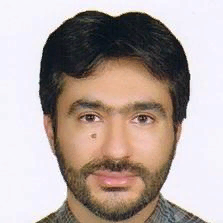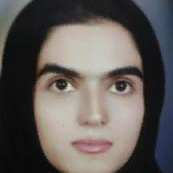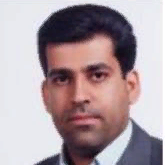International Journal of Image, Graphics and Signal Processing (IJIGSP)
IJIGSP Vol. 5, No. 5, 28 Apr. 2013
Cover page and Table of Contents: PDF (size: 316KB)
Using Shape Information and Dark Paths for Automatic Recognition of Touching and Overlapping Chromosomes in G-Band Images
Full Text (PDF, 316KB), PP.22-28
Views: 0 Downloads: 0
Author(s)
Index Terms
G-Band Image, Touching chromosomes, Overlapping chromosomes, Dark path
Abstract
Nowadays, Karyotype analysis is frequently used in cytogenetics. It is a time-consuming and repetitive work therefore an automatic analysis can greatly be valued. In this research, an automatic method is presented. Firstly, a proposed locally adaptive thresholding method is used to segment chromosome clusters. Then, the clusters is divided into two main categories including, single chromosomes and multi-chromosome clusters based on geometric shape of clusters. In the next step, each extracted cluster is investigated to find the dark paths in order to detect touching chromosomes. Then, overlapping chromosomes are separated in clusters based on their geometric shapes. Finally, a criterion function is used to measure the similarity between the outputs of the proposed algorithm and the single chromosomes in order to recognize separated parts. The proposed algorithm is applied on 47 G-band images. The results shows that single chromosomes and clusters are recognized by the precision of 98.5% and 86.4%, respectively and separation of touching and overlapping clusters are done by precision of 70% and 67%, respectively.
Cite This Paper
Payman Moallem,Arezoo Karimizadeh,Mohammadreza Yazdchi,"Using Shape Information and Dark Paths for Automatic Recognition of Touching and Overlapping Chromosomes in G-Band Images", IJIGSP, vol.5, no.5, pp.22-28, 2013. DOI: 10.5815/ijigsp.2013.05.03
Reference
[1]L. Ji, "Intelligent splitting in the chromosome domain", Pattern Recognition, Vol. 22, pp. 519-532, 1989.
[2]E. Grisan, E. Poletti, and A. Ruggeri, "Automatic Segmentation and Disentangling of Chromosomes in Q-Band Prometaphase Images", IEEE Transactions on Information Technology in Biomedicine, Vol. 13, pp. 575-581, 2009.
[3]B. Lerner, "Toward a completely automatic neural-network-based human chromosome analysis", IEEE Transactions on Systems, Man, and Cybernetics, Part B: Cybernetics, Vol. 28, pp. 544-552, 1998.
[4]H. Choi, A.C. Bovik, K.R. Castleman, "Maximum-Likelihood Decomposition of Overlapping and Touching M-Fish Chromosomes Using Geometry, Size and Color Information", IEEE 28th Annual International Conference of Engineering in Medicine and Biology Society (EMBS06), pp. 3130-3133, 2006.
[5]Y. Rahimi, R. Amirfattahi, and R. Ghaderi, "Design of a Neural Network Classifier for Separation of Images with One Chromosome from Images with Several Chromosomes", 3rd International Conference on Broadband Communications, Information Technology and Biomedical Applications, pp. 186-190, 2008.
[6]L. Ji, "Fully automatic chromosome segmentation", Cytometry, Vol. 17, pp. 196-208, 1994.
[7]W. Yan and X. Feng, "A Watershed Based Segmentation Method for Overlapping Chromosome Images", 2nd International Conferecne on Education Technology and Computer Science (ETCS), 2010.
[8]P.S. Karvelis, D.I. Fotiadis, I. Georgiou and M. Syrrou, "A watershed based segmentation method for multispectral chromosome images classification", IEEE 28th Annual International Conference of Engineering in Medicine and Biology Society (EMBS06), pp. 3009-3012, 2006.
[9]J. Liang, "Decomposition of overlapping chromosomes", In: C Lundsteen and J Piper (ed). Automation of Cytogenetics, Springer, Berlin. pp. 177-90, 1989b.
[10]G. Agam and I. Dinstein, "Geometric separation of partially overlapping nonrigid objects applied to automatic chromosome classification", IEEE Transaction on Pattern Analysis and Machine Inteeligence, Vol. 19, pp. 1212-22, 1997.
[11]M. Popescu, P. Gader, J. Keller, C. Klein, J. Stanley, C. Caldwell, "Automatic karyotyping of metaphase cells with overlapping chromosomes", Computers in Biology and Medicine, Vol. 29, pp. 61-82, 1999.
[12]G.C. Charters and J. Graham, "Trainable grey level models for disentangling overlapping chromosomes", Pattern Recognition, Vol. 32, pp.1335- 49, 1999.
[13]G.C. Charters and J. Graham, "Disentangling chromosome overlaps by combining trainable shape models with classification evidence", IEEE Transaction on Signal Processing, Vol. 50, pp. 2080-85, 2002.


